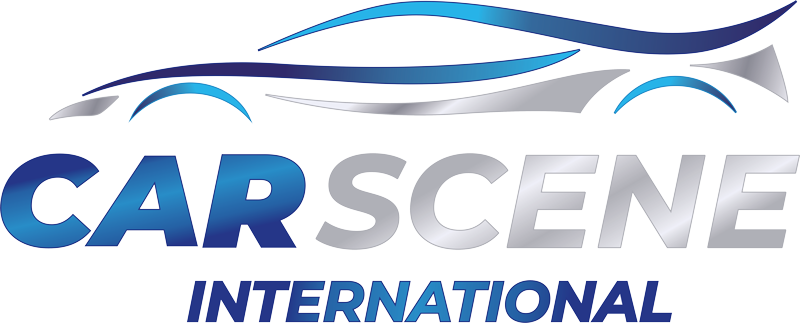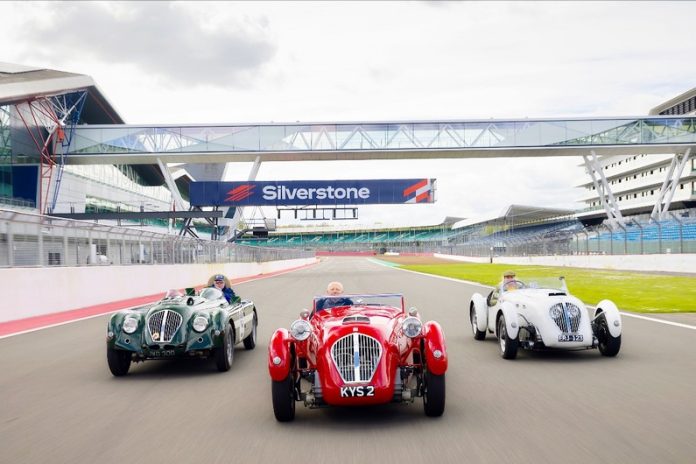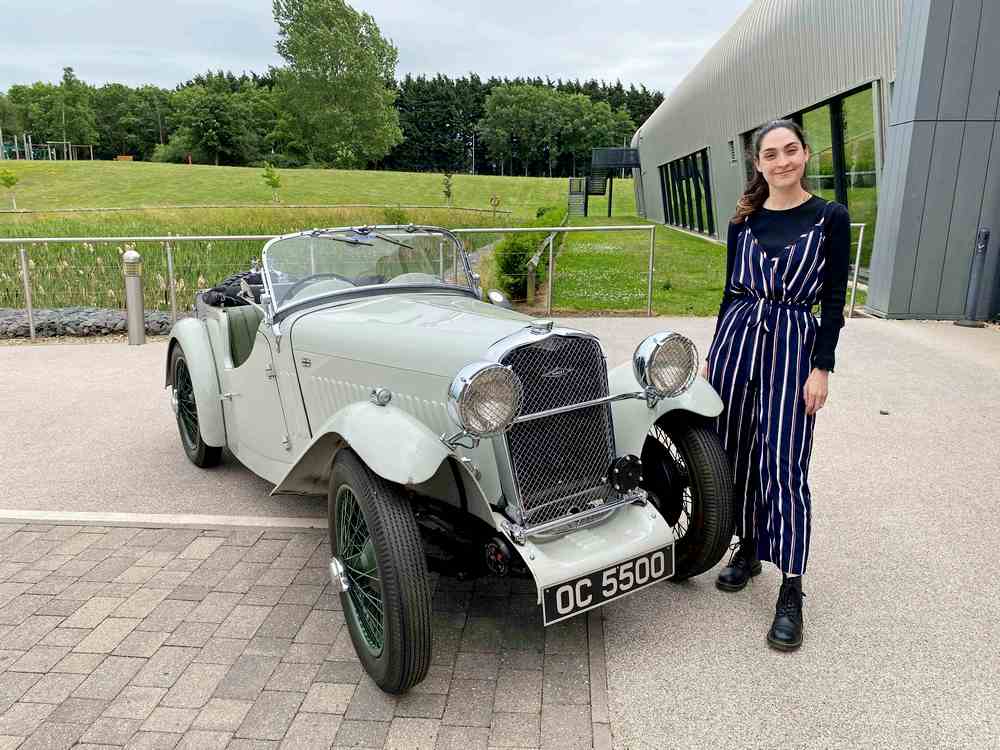
HEALEY AND OTHER FINE CARS NEWS BULLETIN
March 2019
| This is the third in the Warwick Healey archive ‘oral history’ series of posts. As I mentioned in the first one, published last December, when the Warwickshire County Record Office bought the Healey Motor Company archive from Geoff Healey’s family, the staff’s first job was to start cataloguing the archive’s contents. Running a close second was embarking upon a programme of recording the memories of former DHMCo. employees and Healey enthusiasts. Transcripts of the interviews were made and are available on the “Warwickshire’s past unlocked” website. However, because they have to be “verbatim” i.e. noting every and, but, “you know” and every cough etc., they are not easy to read; neither are they accompanied by any photographs. It is for those reasons that I embarked upon “tidying” the transcripts, to make them more readable and at the same time adding appropriate photos.
This “tidied” transcript is of the interview that was conducted with Gordon Barton who worked mainly in the Donald Healey Motor Company Stores, alongside Fred Draper, both at the Cape Works and Coten End. This is what he told the interviewer – My name is Gordon Barton and I joined Donald Healey Motor Company in 1954. I started in the Service Shop and after about six months I transferred to the Stores department. Interviewer: So, when did you first encounter a Healey car? Well, I saw a Healey Silverstone before I started work. I lived in Leam Terrace in Leamington Spa and there was this red Healey. I had never heard of it before, they were showing it to two brothers who ran a chrome-plating business in Leamington and I remember looking at it and thinking “crikey”. It was brand new, I was very impressed, I had never heard of a Healey car before. 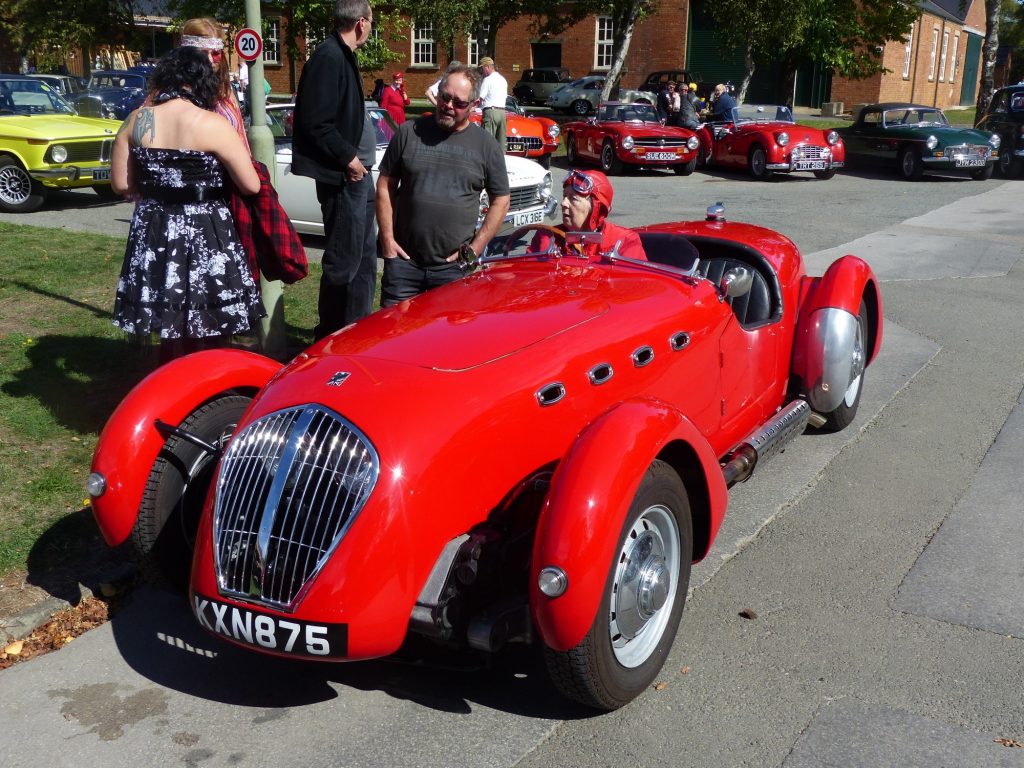
Interviewer: So, then you ended up working at the Cape. How did that come about? As I say, it nearly didn’t happen because I applied for a job at Mains the Vauxhall dealers in Leamington. Luckily, in some ways, the job had been taken, so, I went back to the Job Centre and they said “Oh, Donald Healey, the Motor Company in the Cape in Warwick, want someone up there”. I had never heard of them, so, they explained to me where it was. I got on my bike and rode up to Warwick, as I was approaching Lock Lane there was a Healey car coming down the other way so I followed it. When I rode into the works, I found twelve American servicemen there, all in their uniforms, wandering about. There were also a number of lovely Healey cars there too and I thought to myself “this is the place for me”. The Foreman at that time was an ex-RAF chap by the name of Bob Rivett, I said “Bob Rivet” and he said “Bob Rivett old boy, Bob Rivett”, he’d got a handlebar moustache. I think that was on Friday and they said “when do you want to start?” The result was I started on the following Monday. Interviewer: What was the first thing they had you doing? Well I worked with a chap called Tom Wincott who was the mechanic, he had got an Alvis engine on the bench, a 3 litre Alvis out of an Alvis Healey. The benches were substantial, made with an oak base and a metal top. Tom was just finishing it off, ready to put back in the car. Most of the time you were doing all the work that the mechanic didn’t want to do, underneath the car draining the oil, all that sort of thing. I used to hate the smell of the hot oil, it used to make me feel a bit sick actually. That was when they were doing the Le Mans kits, converting a standard Austin Healey 100 into a 100M . The standard cars used to arrive on a transporter from Longbridge, with sort of second-hand (worn) seats in. (This is a strange description, one can only assume that this was to prevent new seats from becoming soiled by the mechanics getting in and out of the cars. These day a plastic cover would be used. Ed.). Healey’s used to convert the engine to Le Mans (M) spec, fit the louvred bonnet and securing strap then they used to road test them. They would go back on the transporter to Longbridge to be finished off. Most of them were left hand drive for the American market. I used to go on tests with them up the road, wearing white overalls and having a stop watch in my hand. The instruction was “Go up the road and test it”. We went down by Warwick Castle on the Banbury Road. After a while we pulled to the side of the road to either advance or retard the ignition on the distributor. Then we would go off again doing nought to sixty tests, these were new cars, by the way, so they wouldn’t be ‘run in’ but they still used to do 60 mph in just under ten seconds. But these days, if you pulled up on the Banbury Road you’d never get out again, would you? [Laughter] (referring to current traffic congestion Ed.) Then we used to go down what we called the Barford Straight, it was another test route we used, it had a long straight with a slight kink halfway down; when you are doing about ninety miles an hour, it becomes a bend. They used to go through into Barford village (where Geoff and Margot Healey lived. Ed.), turn round and come back down. I think that there were a few complaints from the villagers at the time but that was the test route. I: Were they still manufacturing any models there or had that stopped by then. No. That’s right, the Experimental Department were doing 15 prototypes, that was the 100 S of course, when they produced those in 1955, they had them lined up taking about half of the service workshop.  Interviewer: How many did they do at a time? I can’t remember now. They did fifty all together, about fifty, plus the race cars, which was probably about fifty-four, fifty-five of them. As I say, Experimental were doing the race cars for Le Mans, Sebring, Targa Floria, Mille Miglia etc. Yes, quite an interesting time that was. We used to get there early in the morning to put the cars into the workshop, get as many in as we could, in the service bays each side. I couldn’t drive, I didn’t have a licence. John Gardner said “can you drive?’” I said “No.” They had a Series E Morris van and he was running along the side of the van with the door open telling me what to do with the pedals. Only about a week after that, I was in the Healeys, brand new cars! Interviewer: Quite a responsibility. Yes, luckily I didn’t damage any of them, I can’t remember doing so, anyway. Interviewer: So then you worked for Fred Draper? I went into the Stores, at the Cape with the task of supplying the workshop with the parts they needed. One day a black Austin Healey 100 came, pulled up in front of the service hatch and James Robertson Justice (famous British actor Ed.) got out of it. I couldn’t believe it. How he got in it, never mind out of it I don’t know (he was a big man in all senses Ed.). He was just in for a service, I think.  Interviewer: Did you get many well-known faces turning up like that? There was someone connected with Coleman’s Mustard, a director I believe. He had a Healey Tickford, painted in a mustard colour. Interviewer: Had the colour been specially sprayed because it was the mustard colour Yes it was. We had a few celebrities. But Brian (Bic) Healey used to tag onto them, you know. I: How about the race drivers? Did some of the drivers..? Yes, Clive Baker wasn’t there then, no that was later, wasn’t it? Interviewer: Stirling Moss? I didn’t see Stirling Moss. He got associated with the boats, when they started making those, he was more involved with them. Interviewer: They used to float them, didn’t they? They had an area where they used to float them? Yes. I think the first one sank actually, they left it there over their dinner hour and when they came back it was submerged. But I think they put it right. They were nice boats, very collectable now I think. Interviewer: So can you describe the layout of the Cape Works and what the different departments were? Yes, it was like an old aircraft hangar and down one side were the offices and the other side, in the top corner, was the Machine Shop. Then the Stores was beyond that along the side. There were some other offices at the front of the building as well. Geoff Price, director, and Donald Healey, they were at the front of the building obviously. The telephone exchange office was there as well. At the back was the Experimental Department. As you come in through the gate, the entrance, there was a small building on the right-hand side where they did some prototype work. And then the newer building at the side, had just been completed when I worked there. It’s said they built it for the boat production really, I think they did do some boat production there, but, I think after that they used it as a servicing bay. I went in there once and there was a Ferrari in there, a 1954 single-seater Ferrari backed in there. They had the engine out and put it into a Austin Healey 100 chassis. It didn’t work, it didn’t come to anything, but I remember them starting it up, the corrugated sheets rattling away [Laughs].  Interviewer: We have heard from a lot of people that they were very secretive in the Experimental Department. Can you describe that? Yes, they were. Me being in the Stores, I had to go over there once or twice. Geoff Healey didn’t say anything to me, he didn’t say, “You are not supposed to be in here, get out!” But they were doing all sorts of things in there. Interviewer: Did you have to sign anything? No. They did one like a bird cage frame, it ended up looking like a hill climb car, similar to a Lotus 7 but on a larger scale. That was the sort of thing they did, using tubular frames. Yes, there were some comical things happen there as well. We used to play up… Interviewer: I bet there was some real characters work ing there. Yes, they were. One day I was in the Stores and a chap comes up and says “can I have the thrust washer off a gearbox?” I said “What sort of box is it?”. He answered “A BN1 3-speed”. I asked, “what do you it want for?” He replied “You can have it back again”. Anyway, he goes off and Jack Atkins, a big chap, had just completed this gearbox and it was on the bench. He had gone to the toilet I think, and Alf Smith, the one who had collected the washer, smeared it with a little bit of oil and just left it on his bench by the side of the gearbox. Meantime, he was sent out on a breakdown, so I was watching Jack when he returned, he picked up the washer and looked hard at it asking himself the question, “Did I put one in? I’m sure I did!”. He came up to me and said “Did I have one of those washers out? Can you check your records?.” I said “No, Jack we didn’t have one of them out?” “Oh, damn” he says. [Laughs]. Then he started taking the side of the gearbox off. I had to stop him, I said “It’s just a joke!” He said “It’s that Alf Smith, I’ll bet. I’ll break his neck!” If I hadn’t been watching, Jack would have taken that box apart, to check for what he thought was the missing thrust washer. Those are the kind of tricks they used to get up to. One of the best, most comical things concerns John Gardner, as I said, you’ll have to try and get to interview him; it was when the 100-6 came out and one was parked in front of the Stores gateway. What they used to do, if you lift the bonnet (‘hood’ for our American readers) up and just put it on the prop, it doesn’t go back very far. I don’t know what John was working on but it was something by the bulkhead, he was having a hell of a game, he was swearing with exasperation. What they used to do was tie a string round the plunge on the bonnet, take it across the back of the hood (soft top) and put it on the boot lid handle. By not using the prop rod the bonnet would come back considerably more, giving you more space to work in. In the meantime, Geoff Price comes with a customer who had left something in the boot; Geoff opens up the boot and of course the bonnet goes down on John’s neck. He couldn’t get out. I’ve never seen anything so funny in all my life. John didn’t think it was funny, of course! He thought it was one of the mechanics playing up and once he had extracted himself, he dashed off to his bench, grabbed a hammer and ran round the back of the car. Geoff was like “steady on”, the customer looked on in astonishment wondering what on earth was going on. Interviewer: So when did you acquire your own Austin Healey? Not until 1999 actually. Who would have thought then in those days, so collectible now, because people were just using them as everyday transport, weren’t they?. I didn’t ever think I would get one to be honest, but this one cropped up, and, so, yes, April 1999 it was. Interviewer: Could you say a bit about how you acquired it? It was a chap called Dave Barker, who restores Healeys – he is not very well-known (in the Healey world, Ed.) because he restores Jaguars as well on a small scale. He was up near Grantham in Lincolnshire, a nice chap. He used to come down to us (A H Spares – see later part of the story. Ed.)) with patterns for us to replicate. I was trying to get hold of a BN 7 Mark 2, two seater, with a triple carb because they only made about three hundred and fifty-five. I had the chance of buying one but the chap decided that he didn’t want to sell it in the end. That’s the model I wanted to get but they were very difficult to find. So, in the meantime, Keith Bates who was on the phone said ‘Dave Barker’s got two 100s he’s rebuilding; he’d finished it as a left-hand drive car first and then couldn’t sell it for some reason. Now he was converting it to right-hand drive. I spoke to him – he had all the parts from us, A H Spares, and then he said “come and have a look at it” When I went to see it I took a louvred bonnet, a strap, alloy rocker cover and a wood-rimmed wheel with me. I took all that with me just in case I decided to buy it. That is because it wasn’t Le Mans (M type) converted at that time. So, anyway, I decided to have it, I tried to bring him down on the price but he said “I’ll tell you what I’ll do, I’ll fit the bonnet, we’ve still got some of the paint left that we used and I’ll fit the rocker cover and the steering wheel, I’ll put that in with it”. So, we did the deal. Interviewer: What colour is it? It was ice-blue metallic. So, yes, we had that done. Because it fooled a lot of people, really, because it wasn’t Le Mans modified at that time. It is now, but it wasn’t then. Interviewer: What does it feel like, to drive an Austin Healey? What’s distinctive about it, do you think? Well, you have got to concentrate a bit more, and they are drum brakes, but they are quite good, if you concentrate. The BN 2 was a better car, the brakes were improved, they had got wider brakes on the BN 2. It doesn’t have servo assisted brakes but it’s amazing. I took it out yesterday, I had to stop quite quickly and it’s surprising how quick it did stop. You’ve got to press on it really. [laughs] For drum brakes they’re really good. Interviewer: What sorts of speeds would it get up to now, do you think? I’m not sure. The Le Mans kit took me from ninety brake horse power to a hundred and ten, I’ve had all the different pistons, high pressure pistons, cam shaft, it’s got an alloy head on it now because the cylinder head cracked and I couldn’t get a cast iron one, so I got an alloy head. JME Healey, up at The Cape put the alloy head on, in that workshop that Donald Healey used to have. So, really, it’s a works car. Done at the works, isn’t it! [Laughs] So, yes, I had all that done and then, as I say, there’s always a bit of play in the wheel, because it’s a worm and peg, not rack and pinion, so you’ve always got that bit of play. The indicator on the steering wheel boss won’t return sometimes now. Interviewer: You say that, after you finished working at the Cape, you went into the RAF and then after you left the RAF you then went to work at Coten End. 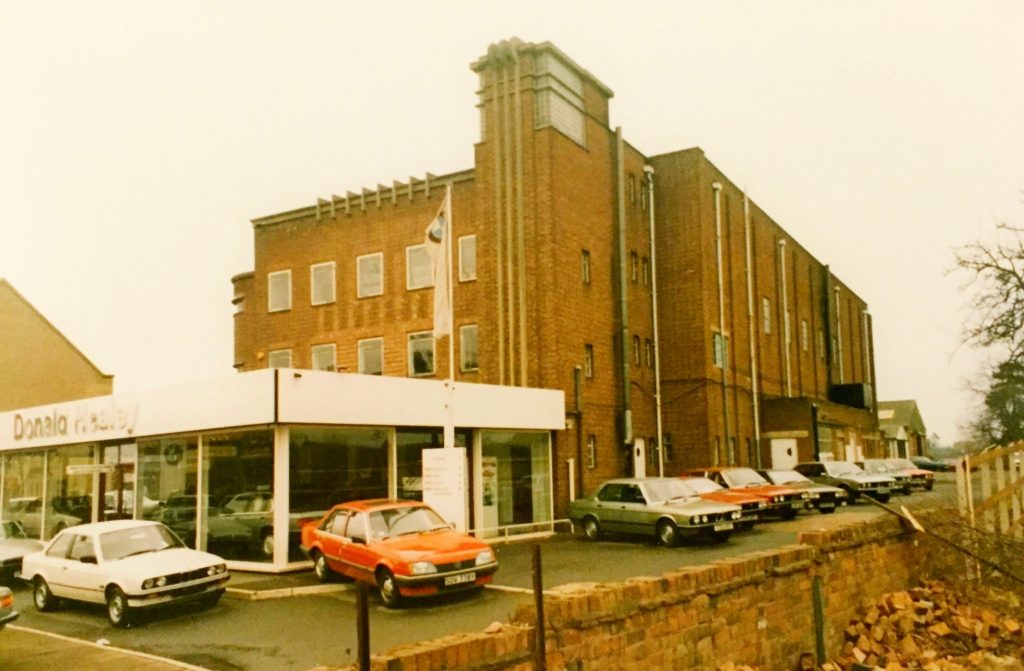
That’s right – 1964. Interviewer: So were you doing the same job as you did previously? Yes. I joined Fred because Fred Draper is the one who came and asked me to rejoin. When I came out of the Air Force, which was 1963, I got a job at Leam Auto in Leamington, it was a BMC dealer at the top of the Parade. I was there for about ten months I think, something like that. I couldn’t go back to Healeys at the time because they didn’t need anybody and of course they were not compelled to take you back if you hadn’t done just the two years of National Service, I had served for longer. Anyway, Fred came knocking at the door, actually I was on holiday at the time; a friend of mine, Fred Wheeler let me know in the strangest of ways. I was driving along Weymouth (a Dorset seaside resort) promenade, and there was a bang on the roof of the car, I thought it was some yobbos but it was Fred Wheeler, he said ”Fred Draper wants a word with you”. I went back the next day and I got in touch with Fred. That’s how I got my job back in the Healey Stores Department in 1964. In the meantime they had moved from The Cape to a converted Cinema at Coten End, Warwick. There was a showroom on the front and the Stores were basically on the balcony at the top. The acoustics in that location meant that noise was amplified, not at all pleasant. One of the people contributing to that noise was Bill Buckingham, the panel beater. They had got these wooden bucks on the stage and he was hammering away all the time. They were doing the Sprite prototypes for Le Mans. You had to shut the office door if you wanted to use the phone, the noise used to really come back at you. Interviewer: Was that the main place that people went to for spares at that time, at Healey’s? It was, yes. Interviewer: So, you would get people from all over the country and from abroad as well? From America? Yes, most of it was sent through the postal system. At the Cape, one of the American companies, they used to sell a special free flow exhaust system for the Sprite; Bill Allsop, who was in charge of packaging, would make up these huge wooden cases. There would be about twenty or thirty systems in one case, going to America. I watched the prototypes – the Sprite Mark 1 being tested. I remember Barry Bilbie (the accomplished Healey chassis designer Ed.) going up Lock Lane in it, one day, without any bodywork on, just the frame and pieces of wood at the front and back to which lights were fitted to make it legal. When we first saw the pre-production Sprite we thought how ugly it was, with those lights dumped on the top. We thought, crikey, it looks like they designed a car and then forgot the headlights. The first prototypes had pop up headlights operated by rods I think but it wasn’t very successful, so they decided to just put two lights in the top of the bonnet (hood). The first one was just like headlights off a motorbike, something like that. But then they put the fairings at the back, that made it look more of a piece. But that’s a collector’s car now, everybody’s after them aren’t they? They had like a (smiling) face on the front didn’t they? Yes, as I say, the problem they had was where the rear springs fitted – they were quarter elliptic springs and where they were mounted into the frame, they were starting to crack. So, some of the Experimental lads welded strengthening pieces around those areas. By the time it went into production it had been sorted. Interviewer: And the spare parts that you supplied, at Coten End, where did they come from? Did they come from Abingdon for example, or were they made on site, or how did that happen? Yes, we used to get most of the spares from British Leyland. We used to get a large delivery every week. We kept a stock of most fast moving parts. We also had tyres and body panels. We used to receive a number of complaints, over the years, about the replacement panels not fitting. Part of the problem, on the ‘Big Healeys’, so the story went, was that Jensens, who made all the panels for those cars, used to select the best panels for production and the less good were used for spares. So, you could never be sure that they were going to fit properly. We had a job explaining that to customers. Ted Bradnam who worked at Coten End in the body shop where they carried out body repairs, came and tried three or four rear wings. He said “I think I’ll have the first one” I thought, oh crikey, which one’s that? He said “that’s the nearest” the first one I brought. It just shows, doesn’t it? that every car is different. Wing pressings would be the same, despite the story of Jensen selcting the best for production, it’s just the finishing of them when fitted to the car. There were a lot of differences in that process. Interviewer: So you stayed at Coten End until about 1972? 1974, because when the ‘Big Healey’ finished in about 1968, Healey started selling MGBs then they said they were going to take on a Fiat franchise. So, Fred Draper the Stores manager said one of us had to go. I said to Fred that I’ll go because you’re married and have got two daughters. “No”, he said, “I don’t want to get involved with Fiat, I’m going to set up on my own”. He went up to see Geoff Healey, he wanted to buy all the remaining, Austin Healey spares, with his redundancy money which wasn’t all that much really. So, they agreed to it, Geoff Healey said “I don’t think you are doing the right thing Fred”. Fred’s reply was “As long as I can make a reasonable living out of it I’m going to do it”. So Fred, left, and I stayed on as Stores Manager for the Fiat franchise. I had to go on a Fiat course at their Brentford headquarters. I didn’t enjoy that very much, I must admit. We carried on with Fiat and Fred set up selling Healey spares from his home. He even kept windscreens under his bed and they were on the phone all through the night to mostly American customers. He was doing all right and then he got some premises on the Tachbrook Road. It was formerly owned by a Jack Shepherd who ran his dairy business from there. It was next to Heathcote Garage which is still in existence in its current form of Heathcote Autos. The building was quite narrow with a small door, it went back so far and Jack Shepherd was still serving his family with bacon and eggs at the back! He gradually cleared the sheds out at the back for Fred to use as storage space. Interviewer: You stayed there until … Yes, I joined Fred Draper’s new company. When Fred had left Healeys he said to me “If ever I want anybody, obviously, you’ll be the first one I’ll call on”. Meantime, Robert Hill, his nephew, had joined him, he wanted to go into an equal partnership with Fred but Fred wasn’t keen on that. But that is what happened in the end. Value added sales tax (VAT) had been introduced and Fred said “I don’t think I can cope with this”. So young Robert got involved. Meanwhile at Healey the Fiat franchise wasn’t going well and they were going to take a Renault dealership on. I thought “Oh crikey I don’t really want to get involved”. Fred came to my rescue. He said “would you like to join me, I think we could do with you now”. So, that’s what happened in 1974. At the time, Fred had booked a holiday to go off for a week or so and Robert had to go in hospital for an operation so I spent a week there before they both left me on my own. It was quite funny really, this chap came in for a fan belt for his Healey and he said “I came in last week and had one, but I’m going to take one as a spare”. I said well I’ve no idea where they are, he had to come in and show me where they were because he had been in previously [laughs]. But we managed alright. Interviewer: It must have been nice to keep the Healey legacy going really though, at that stage? Yes, that’s right. Because Fred started it all up, you see, and all these other companies have followed suit, but Fred was the one. You know he hadn’t got any money to buy all these wing panels and rear shrouds for the Mark 3. He did buy some while I was with him, he bought four or five, but they had been scrapped by Hamblins who had bought the Healey premises at Coten End in 1974. I think several engines were scrapped as well, brand new engines, plus other parts. But he just couldn’t afford to buy them. He couldn’t get a loan from the bank at the time. He just bought what he could. I think it was left hand front wings that were available. A chap called Derek Ross used to help us out, he worked for British Leyland at the time and he looked into the records and found out what they had got in stock. Derek managed to buy what they’d got. Interviewer: Did you ever have any contacts with anybody else that you had worked with previously at Coten End, for example? When I was with Fred? [pause]. No, not really, no, I don’t think so. Derek Ross he was at the Cape. And Andrew Wilson Gunn, he was there, he used to go round the American bases selling the cars. Interviewer: Did they ever come up to the Cape Works? You did mention that at the beginning, some of the American Officers used to come. Yes, they did! Yes, when I went down the first day for the interview, there were about a dozen. They were nearly all pilots, air crew. Interviewer: Was that quite common? Yes. After that they used to fly over low in their jets. There was a few complaints locally I think, in those days. They were like in their Thunderchiefs (Republic F105 Ed.) I think. Interviewer: Because they could see all the cars in the car park? Is that what they were doing? Well they just flew over and they said, some of them, when they came in, “Oh we came over the other day, did you see us?”. We replied “We did see you and heard you!”. You couldn’t do that nowadays, could you? Yes, they used to fly over. Eileen Tallis, who was, on the switchboard at the Cape, was courting a Squadron Leader who was training at Gaydon on the Valiant bomber, the first V bomber. He got posted to Marham in Norfolk he was coming over in the Valiant to Gaydon for some reason. Eileen knew that I was interested in aircraft and she used to come and say “Gordon, Trevor is supposed to be coming over about 11 o’clock, he is going to fly over here”. And sure enough at about 11 o’clock you’d go outside to see him cruise over in this Valiant. He then opened it up and steadily climbed away. I don’t know if she ever married him, she probably did, I don’t know. Squadron Leadon Trevor Ware his name was. (Yes she did marry him, she was the second of his four wives. His plane, a Halifax bomber, was shot down over Germany in 1943 and he was taken P.O.W. He was also an amateur single seater racing driver – quite a character. Ed.)
Interviewer: After you had left the Cape works and it had closed, did you ever go back, years later, to see what it looked like? Believe it or not, when I went in the Royal Air Force, I was posted to Stafford and when I had a bit of leave I went back to Healey’s to earn some money. I was making up number plates, fitting them, and even changing tyres. Putting whitewall tyres on, I did that a couple of times. Then I came back on leave when I was in Germany, I had bought myself a Mini over there. My Mini Bruggemanns in Dusseldorf, when I came over I had this rear silencer and other parts made up at Healeys. When I went back, the case weighed a ton. That was the last time I did actually go to the Cape Works. Interviewer: So when you are driving your Healey now, do you still get comments from people? Oh yes. It attracts attention wherever it goes, it really does. I mean, it was only yesterday that I went to a fête and parked it up. We sat in front of the cars, my colleague has got a Daimler 250 Saloon, silver coloured he was parked next to me. You could hear these people saying, “Oh I like that”. I think they like it because it hasn’t got a wooden dash or wind up windows, none of that. It has plug-in side screens. Sometimes I leave it with the windscreen flat. The windscreen frame has what I call feet at the front. I once had a French chap phone me up to say “I’ve got a car, an Austin Healey 100, but the wing mirrors have broken off but I still have the bases. I asked “where are they then?” “Just forward of the screen”, he replied. I said, “well, I think they’re for the windscreen not wing mirrors. He said “no, no!”. He thought they were wing mirror bases and they had broken off. [Laughs]. I thought they would have explained it to him when he bought the car, but obviously they hadn’t. He couldn’t understand quite what I was saying. There are little knobs on the side and everybody asks “why are these little knobs on the side?”. Then you’ve got that spring on the bottom, that hooks on. Because when they first made it, it tended to come back a bit, with the vibration, I think it tended to come back out of the pegs on the foot, so they put these springs on where the hood toggle goes normally on the top it hooks onto there to keep it down. I left it like that, not yesterday, but the other week at the fête at Bishops Tachbrook. I parked it up with the screen flat. It creates a bit more attention. I can’t drive it like that though. You need some goggles. Quite ingenious really. I don’t know who designed that, it could have been Geoff Healey. Interviewer: You mentioned earlier, you encountered Gerry Coker as well. Yes, he was there at the Cape. Yes, Gerry Coker was there. Interviewer: I suppose at that time, Donald was still living up here, wasn’t he? Is that right? Yes, he lived on the Kenilworth Road in Leamington. I used to bike along Rugby Road and at the traffic lights you could see the drive of the house. At the time he had got those Coupes. They built two special Coupés, Donald’s was red and black top, and then there was a blue and silver top one. The blue and silver one was OAC 1 and then red and black one was ONX 113, that was Donald’s personal car. It had a 100 S engine in it and luxury trim inside, a really nice car. I think it was sold not long ago, eight hundred and fifty-three thousand or something like that? A chap called Arthur Carter who lived near Kings Lynn, he’d got these cars, up there. We went to see him because he wanted to get rid of some spares. There was supposed to be some 100 S spares amongst it, when we got up there all th 100 S spares had gone. He wanted to sell all the rest of the stock but we didn’t take it. He showed us the cars he’d got, one of which was ONX 113 which by this time had been painted all red. “That’s not right” I said, I got quite aerated at the time, I thought – “It should have a black top”. It appears that who ever owned it before didn’t like the black top because it looked like a hard top, made it look like a separate part of the car. Carter had also got one of the Rolls Royce engined Austin Healey 4000s, only four of those were made.  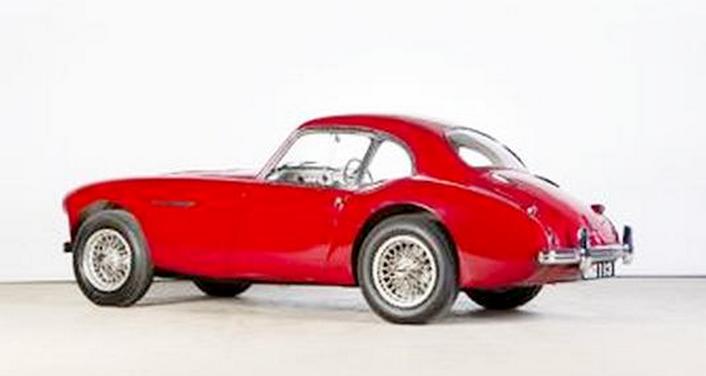 Interviewer: Had they still got many of the early (pre Austin) models on site at the Cape when you worked there? I know they didn’t produce them any more but examples of the products – Tickfords, Silverstones etc.? Yes, there were Tickford and Elliot bodied cars. Tom Wincott was working on that Alvis engine when I started at Healey out of the Alvis Healey. Of course there was the Nash Healey as well which was exported to the States. The Alvis Healey had a similar body to the Nash Healey. Interviewer: So they were still getting customers coming in who had got those early models? For servicing, yes. The Stores still had Riley parts in there. Austin Healey parts were becoming dominant of course. One of the jobs I got was fitting the aluminium brackets to mount the Silverstone body to the chassis. I was doing that job before I moved into the stores with Fred Draper. But it was the right move because through that I was able to join A H Spares, a company which grew and grew and grew. It started with one unit in Southam and Fred says “Well we will just put the racking on one side”. That was a two and a half thousand square feet unit and he said “Well we shan’t want all this space, we’ll let the other half”. So we put the racking up on one side. They have got four units now. While I was there they got the next unit and then the trim shop. As I say, growing very rapidly. Interviewer: How long were you with A H Spares? I was there until 2010 I had a health issue similar to a stroke, I don’t know if it was a stroke or not, I went all numb down my side one Saturday morning. I went to the hospital but they couldn’t find anything wrong. That was March 2010 and I didn’t go back to work after that. I was 71. My sister said “It’s about time you gave it up, about time you finished, you’ve had your warning”. Because it was quite strenuous the last few months. But now it’s much better, they’ve got more space. I used to check all the orders and I could only do it when they’d all gone home at 6 o’clock, so I was there until seven to half seven at night, every night, checking all the orders off ready for them the next morning. Interviewer: We will stop there Gordon. That’s been fantastic, thank you very much. ** Photos denoted thus are held in the Healey Motor Company archive owned by the Warwickshire County Record Office. For guidance on ordering copies visit – |
| SUBSCRIPTION
When the Healey Bulletin was first lauched in October 2017 it was important to establish a readership base of sufficient size to make it worthwhile writing and publishing it. So, for the first few months each Bulletin carried a subscription box. Once a sizable subscription list was established I dropped the subscription box. However, in the last couple of months I have received a number of subscription requests. People obviously like the certainty of receiving ‘their own copy’ rather than keep checking to see if a new Bulletin has been published on the internet. So, with that in mind I am reintroducing the subscription box. As a matter of interest, each edition of the Bulletin receives more that three times the number of hits than is accounted for by subscibers. Proof that interest in the Healey marque is as strong as ever. But you didn’t need me to tell you that did you? Subscribe for future editions of the Healey Bulletin for free |
